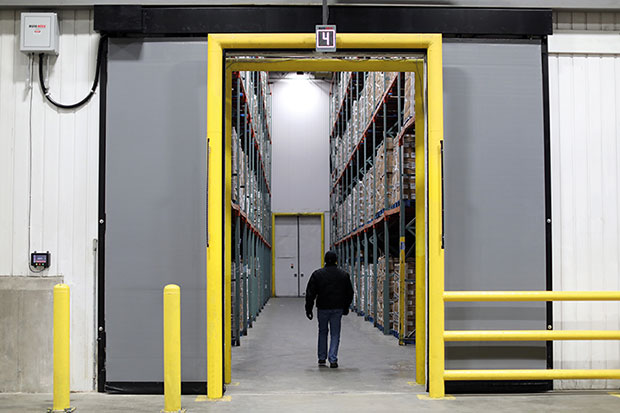Thorsten Mauritz – European Marketing Manager, Rite-Hite Europe: Since the start of the crisis in Ukraine, European coal prices have increased by around 60 per cent, and gas prices have doubled. Governments are calling for a fifteen per cent reduction in consumption to manage winter supplies.
 With prices at an all-time high, the energy crisis poses a real problem for many, not least for the cold storage industry, where energy is the second highest operating cost, next to labour. But there are ways to reduce energy consumption and energy bills, to shield the industry from these cold winds.
With prices at an all-time high, the energy crisis poses a real problem for many, not least for the cold storage industry, where energy is the second highest operating cost, next to labour. But there are ways to reduce energy consumption and energy bills, to shield the industry from these cold winds.
Cold storage keeps our ready meals, medicines and marigolds cold enough to travel across the continent to our front door. According to ECSLA (The European Cold Storage and Logistic Association), there is roughly 60 million m3 of cold storage in Europe, enough for 450 billion pints of milk.
Refrigeration warehousing is an energy-intensive industry. European wholesale energy prices reached an all-time high of around €160 per megawatt hour towards the end of last year and have been rising ever since. They are likely to continue to rise well into next year. Cold storage operators need to plan how they will control costs through winter. Governments are trying to curb demand by urging everyone to save energy. Some fear that if shortages are too severe, Russia’s sanctions will be lifted, so Europe’s gas supply is turned back on. The industry can help Governments by reducing energy waste and costs.
So while the current hiatus in ‘business as usual’ has led to a greater focus on energy consumption, all businesses within the cold storage industry specifically, and the wider logistics environment more generally, understand the need to save energy where they can. Little changes can go a long way. To that end, what are the most common areas where energy can be inadvertently wasted?
Closing the gaps
One is the loading bay. When a truck backs into the loading dock bay, there can be small air gaps between trailer doors and warehouse walls or dock doors and floors through which warm air from outside slips through and into the warehouse. Installing more modern vertical storing levellers, such as Rite-Hite’s RHV-45100, and specially designed drive-through docks, which provide a 4-sided, 3600 seal around the truck, plug those air gaps. With less warm air creeping into the warehouse, less energy is spent maintaining a constant temperature inside, which saves around €2,500 per year per dock.
The second source of wasted energy is cooler doors and freezer openings that don’t shut properly due to frost build-up, which commonly occurs around blast freezer doors. When warmer air from outside hits the colder air from the blast freezer, it condensates, falls to the floor and freezes, obstructing the openings. Now the cooler has to work harder to control the fluctuating temperature. The faster a door closes, the less frost is created.
Some of the fastest cooler and freezer doors available, such as Rite-Hite’s FasTrax FR, travel at up to 2.5m/sec to restrict warm air flows into and around freezers and help maintain the mandated storage temperatures for food or pharmaceuticals. They can create energy savings of up to €9,500 per year per opening. Customised curtain walls such as the R-4 InsulMax insulated curtain are explicitly designed for blast freezers, providing a safe and affordable airflow and thermal barrier to prevent frost build-up and temperature fluctuations and so reduce energy bills.
Faster barriers
In refrigerated warehouses, food manufacturing and processing plants or grocery distribution centres, faster barriers can also dramatically reduce heat transfer from one zone to another. Rite-Hite’s Barrier Glider high-speed freezer doors, for example, with tight thermal seals, open and close at speeds of 1.5 and 0.76 metres per second, respectively. They can save around €16,000 per opening.
There are many cold storage solutions which could offer some protection against the energy crises we are all facing. Asking for advice from cold storage experts could significantly and positively impact the bottom line. Even small changes could make a real difference to energy bills for the cold storage industry.





Comments are closed.